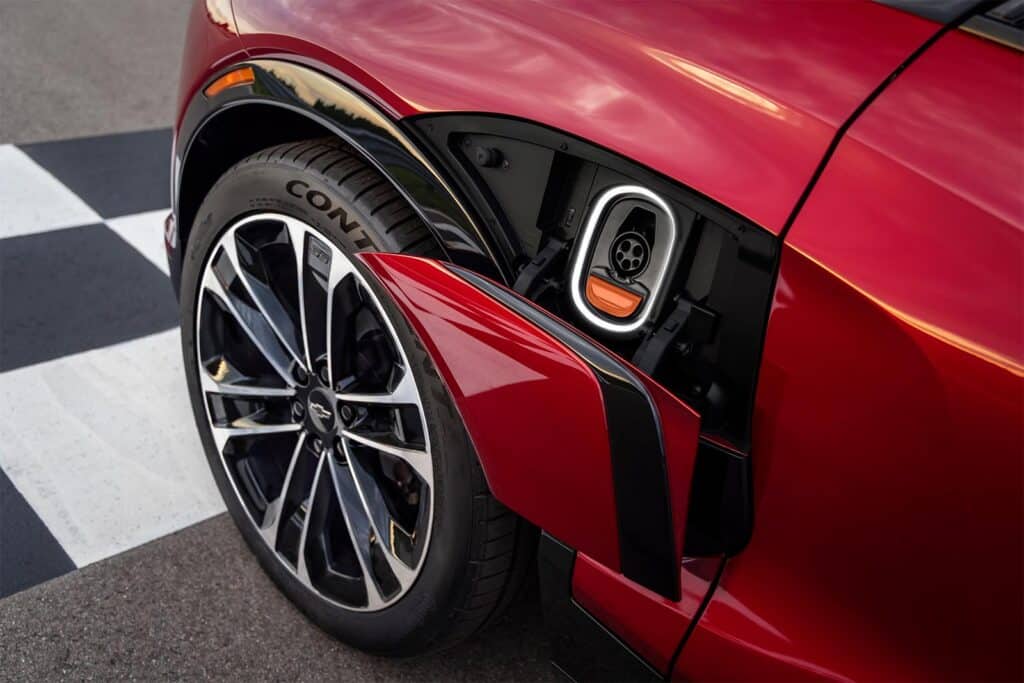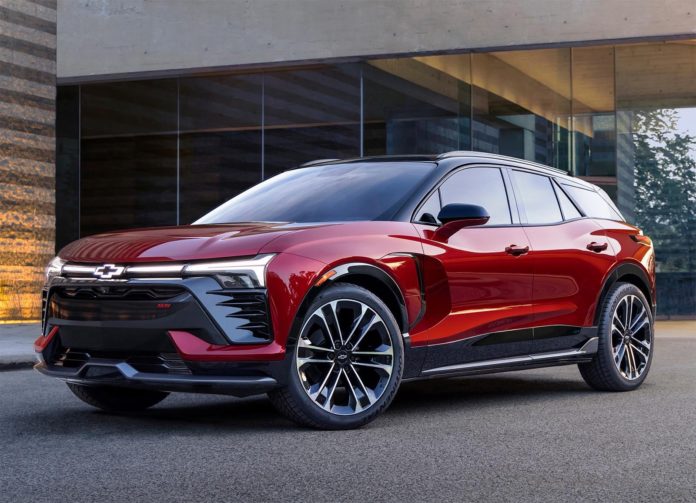The new Chevrolet Blazer EV won’t come cheap, not if you want one of the all-wheel drive or high-performance RS packages, which carry MSRPs starting as high as $61,790.
Whichever version of Chevy’s new battery-electric model you choose, expect to pay a premium over the conventional gas-powered model.
The first Blazer EVs began shipping to dealers on Monday, and consumer response to the all-electric crossover could provide a measure of how well parent General Motors’ all-in battery-electric vehicle program will be received. Blazer is the first in an assortment of new EVs Chevy and the other GM brands will be bringing out during the next several years.
A broad array of trim packages
Chevy previously indicated pricing for the entry-level Blazer EVs would start around $44,995 for the front-wheel-drive LT, the slightly more sporty 2LT package starting at $47,595, and the RS FWD going for $51,995 before factoring in shipping costs. Though they’re not quite apple-to-apple comparisons, the gas-powered 2023 Blazer line carries a sticker ranging from $35,100 to $45,700, depending upon the trim package.
With dealers ready to take in the full line-up, Chevy on Monday started talking about pricing for the rest of the Blazer EV portfolio. An AWD version of the 2LT trim will start at $56,715, while the RS AWD jumps to $60,215. And the more luxurious RS RWD model has an MSRP of $61,790.

That might seem like a typo, since all-wheel-drive models typically carry the highest premium, but in this case, the RS is being pitched to consumers as the sportier RS package, and it will add not only a Bose audio system but also yield a longer 320-mile range.
SS model delayed under next spring
There’s still more to come, however. Chevy said it has “made an adjustment” to the timing of the sportiest Blazer EV package, the twin-motor SS “now (set to) begin production in the spring of 2024.” And it could carry a significant premium over the pricing already revealed. The SS is expected to blast out 557 horsepower and 684 pound-feet of torque, making it one of the most powerful EVs yet in the fast-growing mainstream midsize SUV segments.
When Chevy first unveiled the Blazer EV line in July 2022 it noted the SS also will get WOW, or “Wide Open Watts,” mode capable of giving short bursts of additional power. That will get it to 60 in “under 4 seconds,” according to lead development engineer Bret Dick, though final numbers have yet to be locked down.
Expectations are that the SS model will come in around $65,595.

Blazer EV qualified for federal tax credits
By comparison, the tire-squealing GT version of the Kia EV6 develops 576 hp and 545 lb-ft of torque, with the South Korean carmaker claiming 0-60 launch times of around 3.5 seconds. The EV6 GT starts at $62,695. More mundane trim packages start at $42,600 before delivery fees are factored in.
But the various Chevy Blazer models do have an advantage going for them: they qualify for a $7,500 federal tax incentive under the revised rules of the Inflation Reduction Act passed in August 2022.
Chevy also notes the price premium buyers will pay over gas versions of the Blazer. “Our initial launch editions are highly contented with features we know our customers want and showcase the technology and customer choice the Blazer EV offers,” the automaker said in a statement.

Design
The 2024 Chevy Blazer EV doesn’t stray far from the design of the gas-powered crossover. It adds a bit more sculpting to the body sides, with a powered, pop-open charge port just behind the driver’s side front wheel.
The overall look is low and wide, with a sporty front end that hews to current EV trends. That includes a lightbar with a backlit version of the Chevy bowtie just below the hood. With the RS and SS models, it puts on a lightshow when you approach the Blazer — or power down at the end of a drive. It also has a more functional purpose, indicating the SUV’s state-of-charge when plugged into a charger.
One surprise was the lack of a front trunk, or “frunk” under the hood.
The traditional grille has been replaced by a more aerodynamic sealed panel since there’s no engine up front. Instead, Blazer’s motors and lithium-ion batteries are mounted in a skateboard-like “architecture.” The flexible new Ultium system will be shared with the dozens of other BEVs GM plans to introduce by 2030.
Roomy cabin

The layout has the advantage of mounting the hefty drivetrain below the load floor, freeing up space in the passenger compartment. There’s no center driveshaft tunnel, for one thing. Another plus is that the EV’s center of gravity is lower than the gas-powered Blazer, which should enhance ride and handling.
Inside, the Blazer EV has a more modern and upscale feel than the existing crossover — especially the upper-trim RS and SS versions. The latter gets some appealing tech features, including a head-up display and Super Cruise, the system that lets a motorist drive hands-free on more than 200,000 miles of U.S. limited-access roadways.
Charging
GM’s new UltiFi electrical architecture, meanwhile, will allow the automaker to revise or upgrade Blazer’s software — among other things, adding new features in the future — using smartphone-style over-the-air updates.
As for charging, Chevy hasn’t released full details yet but did indicate that Blazer can add as much as 78 miles of additional range using one of the higher-powered DC public fast chargers popping up across the country. In reality, more than 80% of buyers are expected to do most of their charging at home using a 240-volt Level 2 system.

